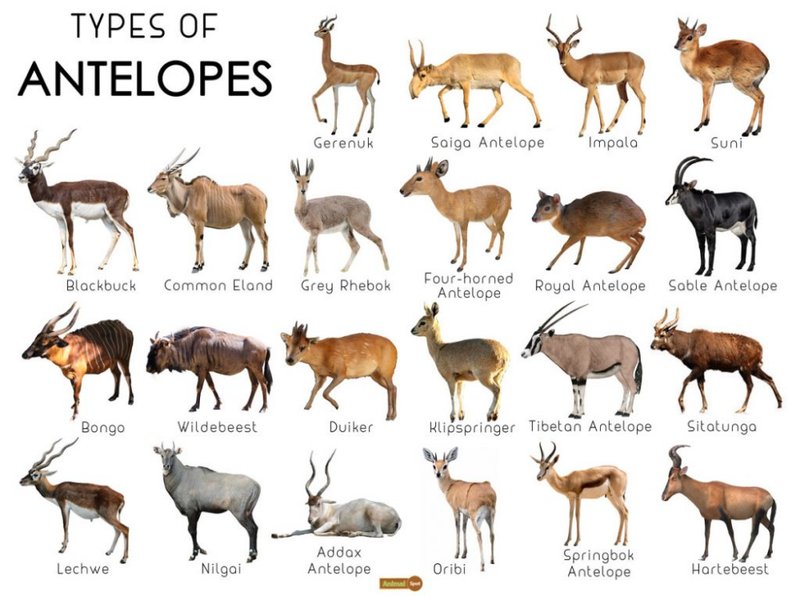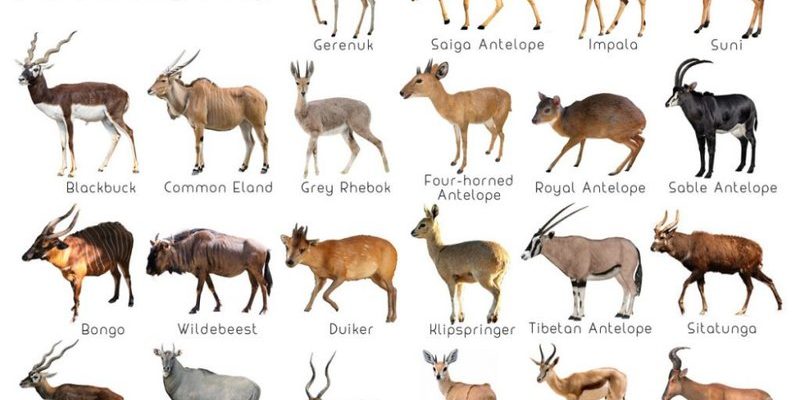
From the open savannas of Africa to the dense forests in parts of Asia, antelopes find their homes in various landscapes. These creatures have adapted to thrive in different habitats, each offering unique challenges and resources. Let’s dive into the world of antelopes and explore where they live, why they choose these habitats, and how they fit into our ecosystem.
Antelope Species and Their Habitats
There are over 90 species of antelope, and each has its preferred habitat. Some species, like the gazelle, are commonly found in the savanna, while others, like the sika deer, prefer wooded areas. Here’s a quick look at some notable species and where you can generally find them:
- Gazelles: These speedy creatures thrive in open grasslands and savannas, primarily across Africa.
- Springboks: Found mainly in southern Africa, they prefer arid, scrubby environments.
- Elands: The largest antelope species, they inhabit savannas and open woodlands across eastern and southern Africa.
- Saiga Antelope: Recognized for their unique nose, these animals live in the steppes of Central Asia.
- Kudu: Inhabiting bushy savannas, they’re commonly found in East and southern Africa.
Each antelope species has adapted uniquely to its habitat. They’ve evolved traits like speed, agility, and camouflage to survive predators and find food. Isn’t it fascinating how nature crafts each species to fit its environment?
African Savannas: The Heart of Antelope Habitat
When we talk about antelope habitats, the African savanna often steals the spotlight. This vast expanse of grassland dotted with occasional trees is home to the iconic African antelope species. It’s like nature’s version of a sprawling buffet, offering plenty of grass and shrubs to graze on.
The warm climate and seasonal rainfall create a rich ecosystem that supports these animals. During the rainy season, the grass grows tall and lush, providing essential nutrition for the antelopes. As a bonus, this environment also supports various other wildlife, including predators like lions and cheetahs, which keeps the circle of life spinning.
But it’s not smooth sailing for these graceful creatures. The harsh dry season can leave them searching for food as the grass turns brown and sparse. Antelopes have developed tactics to cope with this. They often migrate to greener pastures, following the rainfall, which maximizes their chances of survival. It’s a classic tale of adaptability!
Woodlands and Forests: Sheltered Spaces
Not all antelopes prefer the open fields; some find solace in woodlands and forests. Species like the kudu and bongo thrive in these more sheltered environments. The thick foliage offers protection from predators and harsh weather, making it an appealing home.
In these habitats, antelopes use their keen senses and agility to navigate through dense underbrush. They often remain hidden from sight, using the trees and shrubs as cover. This is essential for their survival, especially in areas where larger predators lurk. The kudu, for instance, has impressive spiraling horns that not only make them look majestic but also help them camouflage among the trees.
Interestingly, these forested areas also encourage a diverse range of plant life. Antelopes contribute to this ecosystem by grazing on various plants, helping to maintain the balance of it all. Without them, some plant species could become overgrown, impacting the entire forest community.
Grasslands: The Open Grounds
Antelopes are often the star of the show in grasslands. This habitat type is characterized by vast stretches of grass, making it perfect for grazing. Species like the topi and the grant’s gazelle are particularly fond of these open spaces, where they can run and leap freely.
In grasslands, antelopes face the constant challenge of predators. Speed is their best defense. With their long legs and powerful bodies, they can outrun most threats, darting away in a flash when danger approaches. It’s like a high-stakes game of tag out there!
Moreover, these areas are not just home to antelopes; they also support a variety of other wildlife. Birds of prey soar overhead, while smaller mammals scurry about, all contributing to a vibrant ecosystem. Antelopes play a crucial role in this system, helping to keep grasses short and promoting new growth.
Deserts: Surprising Survivors
You might not expect to find antelopes in deserts, but species like the addax have made this harsh environment their home. The addax is specially adapted to thrive in arid conditions, with its ability to go without water for long stretches and forage on sparse vegetation.
Living in the desert isn’t easy. The temperatures can soar during the day and drop at night. To cope, the addax has developed a behavior of being most active during the cooler hours of the day, like early morning and late evening. It’s a smart survival tactic that allows them to avoid the midday heat.
In addition to being resourceful, these antelopes have a low metabolic rate, which helps them conserve energy. Their unique adaptations showcase the incredible ways life can thrive, even in the most unforgiving environments.
Antelope Conservation: Protecting Their Habitats
With all these incredible habitats, it’s essential to talk about conservation. Many antelope species now face threats from habitat loss, poaching, and climate change. Protecting their habitats is crucial for their survival, as these environments provide the food, shelter, and safety they need.
Conservation efforts often focus on preserving grasslands, savannas, and forests to ensure these animals have suitable living conditions. National parks and wildlife reserves play a vital role in this effort. By creating protected areas, we not only safeguard the antelopes but also the entire ecosystems they belong to.
It’s heartening to see various organizations working tirelessly to protect these habitats and educate the public on the importance of wildlife conservation. Efforts like anti-poaching initiatives and habitat restoration projects make a difference and ensure that future generations can enjoy the beauty of these majestic creatures.
Why Understanding Antelope Habitats Matters
You might be wondering why it’s so important to know where antelopes live. Well, understanding their habitats helps us appreciate the delicate balance of ecosystems and the role antelopes play within them. They’re not just beautiful animals; they’re essential contributors to their environments, influencing the growth of vegetation and the dynamics of predator-prey relationships.
Moreover, this knowledge sheds light on broader issues like biodiversity and climate change. When we recognize the threats these species face, we can advocate for the necessary changes to protect them and their homes. After all, we share this planet with these incredible creatures, and their survival impacts our own.
Their graceful leaps and stunning presence remind us of the diversity of life on Earth. By learning about their habitats, we become better stewards of the environment, fostering a future where both humans and wildlife can thrive together.
In conclusion, antelopes live in some of the most varied and captivating habitats around the world. From the sun-soaked savannas of Africa to the hidden depths of forests and the harshness of deserts, these creatures have adapted in remarkable ways. Understanding where antelopes live gives us insights into the challenges they face and the beauty of the ecosystems they inhabit. So, the next time you see an antelope, think about the incredible journey it takes to call its habitat home.

